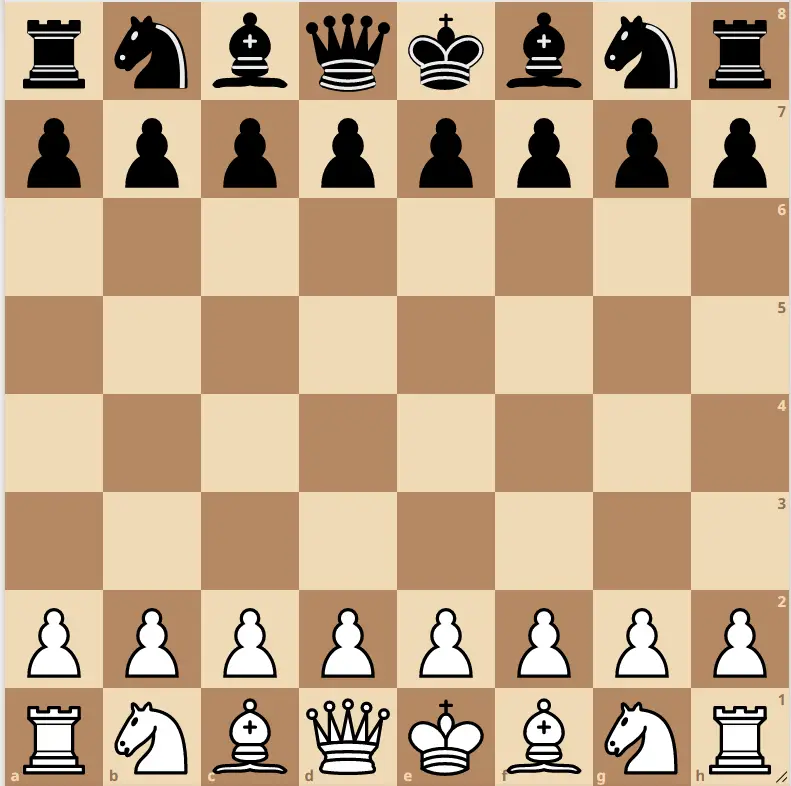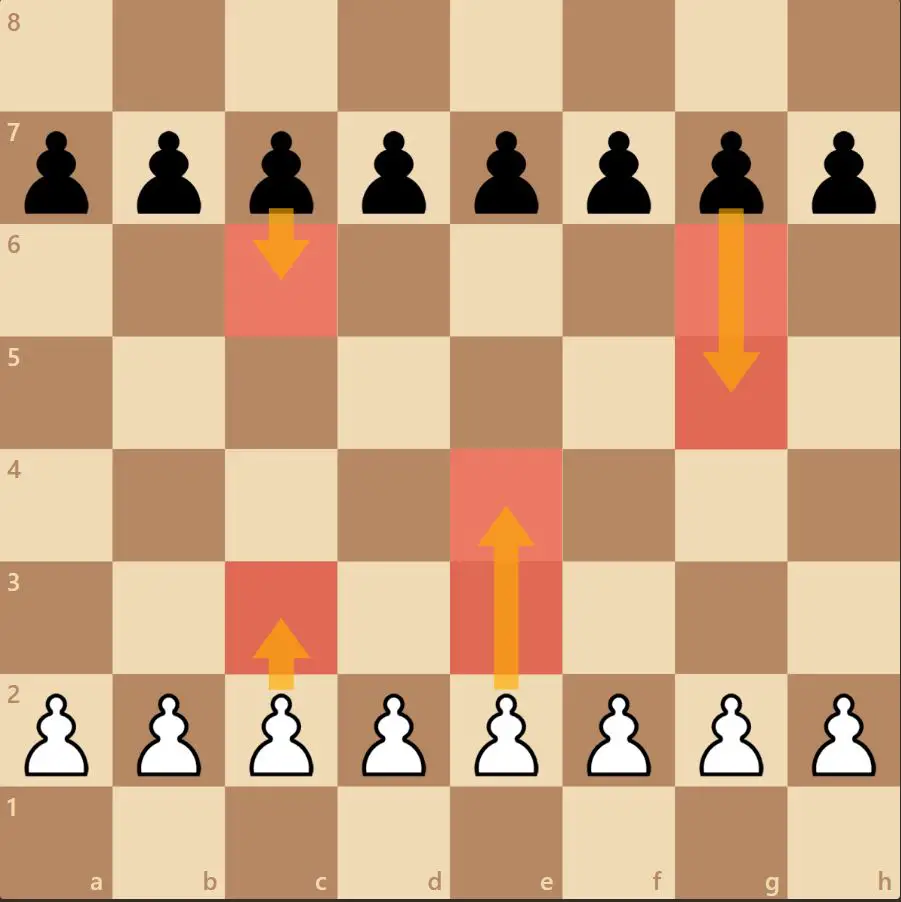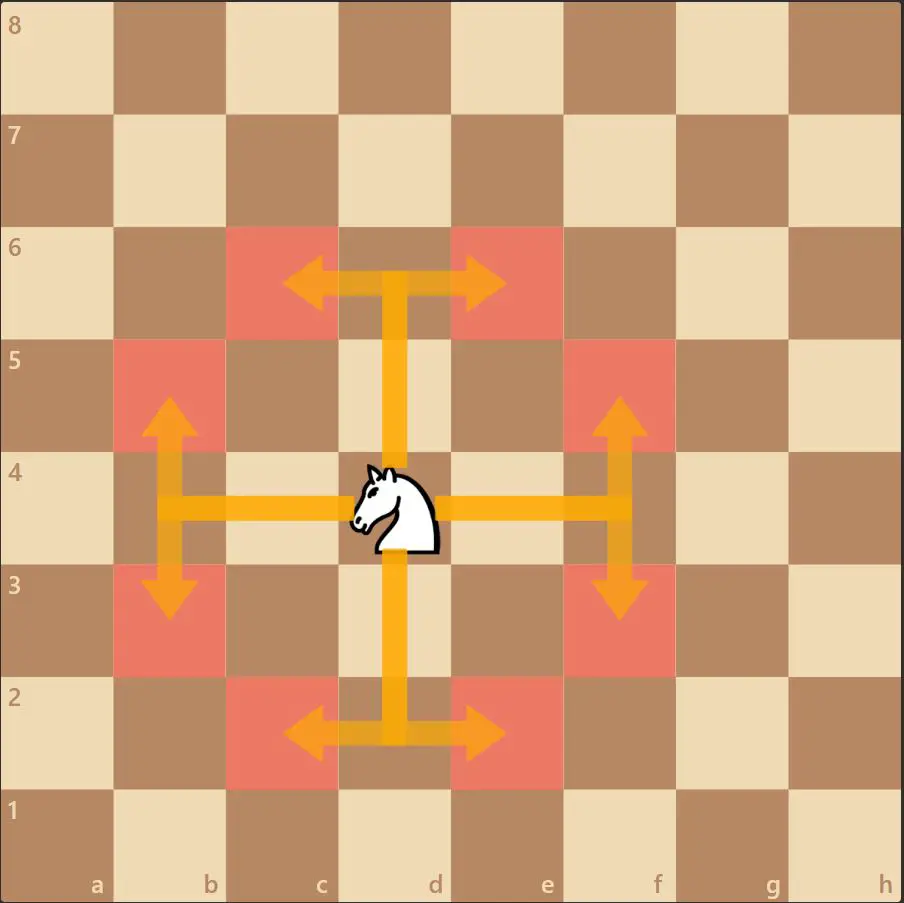The story of chess began 1500 years ago, in a small kingdom in India. If it were to survive all these years, one could only guess how spirited the game is. Chess is not only a simple pastime but a game that is actually a brain tonic. Hence, it’s never late for one to learn to play.
So, whether you are getting ready to play for the first time or sitting down after a long time, we have got you covered! We bring to you a basic beginner’s guide to chess to take you through the game. Once you have familiarized yourself with the basics, you can hone your skills with strategies and tactics. And who knows, you might be the next Grandmaster in line!
Board Setup
Chess, as you might already know, is played by two people on a board of 64 squares of light and dark colours – mostly black and white. The white square must be the rightmost and left most square edge of the board, as shown in the picture below. The chess pieces are placed horizontally across the board, with the second row in respect to the player, consisting of eight pawns.

The first row begins and ends with a rook or castle at the left and right corners. The knight is placed at the square next to the rooks. The bishops follow the suit of knights, placed next to knights.
Now, the two central squares are occupied by the king and queen. The placing of both could be a little confusing for some. How do we know the correct way to place them? The Queen is placed on the square matching her colour. For example, black queen on the black square. And the king occupies the opposite colour.
Since we have setup our game, the next important question would be, who starts first? well, the white player takes the first move. The game continues as each player takes alternative turns till one is the king is killed on the board.
Well, if we are taking the tournament route, the first player to run out of time would lose the game.
Now, how about we look into the moves on the board? Be ready with your chess board in tow!
Understanding Pieces

How To Move Pieces
The first and foremost rule would be that each player gets to make a single move. And no one can skip a turn – you have to move a piece no matter what. All the chess pieces are not moved the same way. Therefore, it is important that every piece must be moved according to their legal movement.
Now let’s look at how each piece moves.
Pawn

Every game starts with eight pawns in front of the eight major pieces. Pawns are the basic players on the board. It is every easy to assume that pawns are unimportant. However, with the right tactics, pawn placement can indeed determine how a game end.
How do you move our pawns? Pawns can only move forward in a straight line, one square at a time. But there are two exceptions to this. First, if your pawn is being moved for the first time, then you have the opportunity of moving it two squares forward. But for this, do make sure that the two squares in front are empty.
Second, your pawn can move diagonally in a special situation. Wondering how? If your opponent’s piece sits diagonal to you, your pawn can then move diagonal either left or right, to capture the piece.
Another kind of capture unique to pawns is the ‘En passant’ capture which means in passing. In case you are playing white and you choose to move two squares in front in your first play. If you land on a square adjacent to a black pawn on its fifth rank then it can capture the white pawn. And it must be done on the very next move
Rook

The rook, without doubt is the second most powerful non-king piece after the queen on the board. It can move across any number of squares, provided it is horizontal and vertical.
But rook cannot move diagonally nor can it skip over pieces which can be used to the player’s disadvantage if not played strategically. Enemy pawns can limit its mobility by developing a good opening.
However, there is one thing that rooks can do, and that is castling. So, what is castling? This is one of the basic rules used strategically to protect its king. Provided there is a required number of unoccupied squares between the rook and king, the king can move two squares to the right or left. Meanwhile, the rook will move sides to the opposite side of the king.
Knight

Knights are special because they are the only ones who jump over other pieces. But how? It moves in a fixed ‘L’ shape. Which is two squares in front or back, followed by a square horizontally or vertically. There is also another L shape it can follow – that is, one square forward or backward following two squares horizontal or vertical.
They are the most efficient pieces in the centre of the board – that is where knights can make the most moves. If a knight is at the end of the board it would limit to 3 or 4 squares. But if it is at the centre, it can choose from eight squares.
Being the most powerful can also make you more vulnerable. So, it is necessary that you sought out squares that are less vulnerable to your knights. These squares are called ‘outposts. If your opponent’s pawns are missing or is not placed strategically, it could be the outpost for your knight.
You can also develop your knight players early in your game. This will help you keep the game under your control. A very well-placed knight will even enable you to castle efficiently. As according to the rules, both the knight and castle must be developed before castling. It is also easy to set traps for knights. For example, if a knight is on a light square, the next move will be on a black. Here, the knight would fall to dark-squared bishop, limiting the squares a knight can move. Therefore, a player must think well in advance before placing the knight. But what it can do is attack two pieces of its your opponent. Otherwise known as ‘fork’.
Bishop

The bishop can move across any square diagonally matching the current colour of the square it sits on. This means that both players have two bishops that can move on both colours. It cannot, under any circumstances, move horizontally or vertically.
Without doubt, a bishop is most effective on an open diagonal without its own pieces. As this may prove difficult, bishops are most effective in the middlegame. Now bishops can be labelled as both good and bad.
A bad bishop is the one whose pawns sit on the same colour as him as its movement would be restricted by its own pieces. And if the pawns occupy the opposite colour of the bishop, it moves more freely. These bishops are called good bishops.
A bishop who is able to move freely without the limits of its pawns are called active bishops and vice versa.
Bishops are made for endgames that end with a bang. It protects the pawns and pieces of your side as well as threaten the opponents with its long range. Also, endgames in which both the white’s, as well as, black’s bishop remain and occupy different colour squares, ends with a draw.
Queen

The queen is one true queen as it moves across any number of squares horizontally, vertically or diagonally. It is the most powerful piece, packing the powerful moves of both rook and bishop. But did you know the queen wasn’t incorporated into the chess board until the 15th century in Spain?
Players usually keep their play, protecting the queen and king only; using the Queen only to wield powerful plays to bring the opponent to its knee.
However, it can move only in a single direction during a single turn. For example, you cannot move a queen vertically and then horizontally before settling into a square. The Queen also doesn’t have any special moves like castling and en passant capturing.
King

Every game is crafted around the ways we can keep the king safe. Therefore, king decides the fate of the game – it ends when the king is checkmated or captured. It can move into a single square horizontally, vertically or diagonally. This seems very versatile, doesn’t it? However, there is an exception. A king can never put itself in check, i.e, it cannot move into a square attacked by its opponent.
If the player knows the basic of pawn structure, skewers and pins, it will help the player protect its players. At endgame, if played well, a king can help in controlling the centre as well as help in promoting pawns by guarding them.
Check and Checkmate
One of the most popular terms of chess that is also used in the common language is checkmate. So, what does it mean? Or rather what is the difference between check and checkmate? Most people think that both means the same thing. Let us show you how different both are.
You need to know this because ultimately it decides whether you win or lose a game. When a player makes a move that allows it to capture the opponent’s king on their next turn, they announce check. The opponent player must then move its king to safety or another piece to block or capture the attacking piece.

Now if a player moves in a way that the opponent cannot stop their king from being captured, then it’s a checkmate. If a successful checkmate is announced, the king doesn’t have to be captured, they would automatically win the game.
Draw
As we have already established, a game ends in checkmate. But there is also another way to end – that is, in a draw. Here, neither player loses. There are various ways a draw can occur. First, a draw results when a player cannot make a legal move on any of their pieces nor is in a check. This is known as stalemate.
Second, a draw can occur when no one has enough pieces to checkmate an opponent. Thirdly, there is a possibility of draw when the same player repeats the same move three times in a row. This is also called threefold repetition and it shows how exhausted the game is. Lastly, when the last 50 moves made by each player doesn’t result in a capture or a pawn move – a draw is announced.
So now, since we have outlined the basic rules for you, all that remains is for you pull out that chessboard and start playing!
